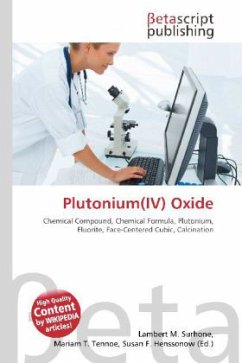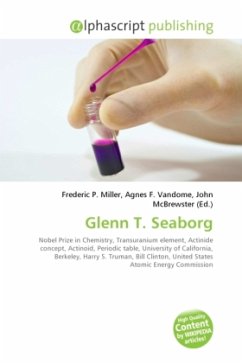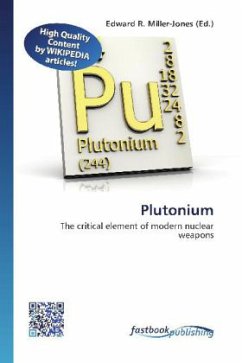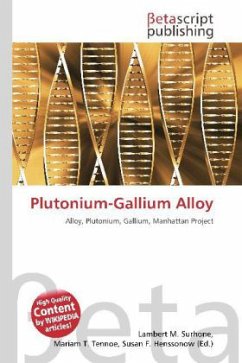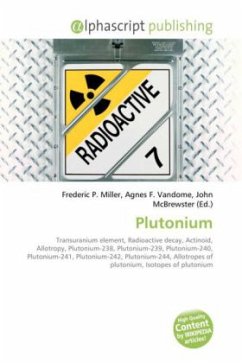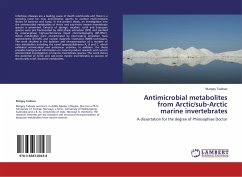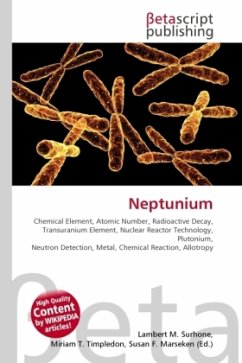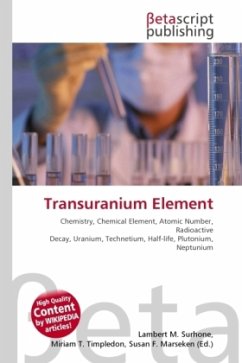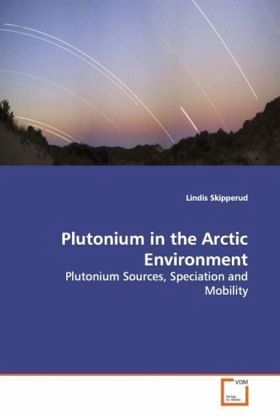
Plutonium in the Arctic Environment
Plutonium Sources, Speciation and Mobility
Versandkostenfrei!
Versandfertig in 6-10 Tagen
52,99 €
inkl. MwSt.

PAYBACK Punkte
26 °P sammeln!
Over the past 50 years, explosions of nuclear weapons and releases from the nuclear industry have introduced anthropogenic plutonium into the environment. In the Arctic environment, the main source of plutonium is from atmospheric weapons testing, but studies of plutonium in the Kara Sea have shown that other releases have given rise to enhanced local concentrations. Since different plutonium sources are characterised by distinctive plutonium-isotope ratios, evidence of a localised influence can be supported by clear perturbations in the plutonium-isotope ratio fingerprints. To assess long-ter...
Over the past 50 years, explosions of nuclear
weapons and releases from the nuclear industry have
introduced anthropogenic plutonium into the
environment. In the Arctic environment, the main
source of plutonium is from atmospheric weapons
testing, but studies of plutonium in the Kara Sea
have shown that other releases have given rise to
enhanced local concentrations. Since different
plutonium sources are characterised by distinctive
plutonium-isotope ratios, evidence of a localised
influence can be supported by clear perturbations in
the plutonium-isotope ratio fingerprints.
To assess long-term consequences when radionuclides
are released into the environment, information on
the source term speciation, transport and
transformation processes and biological uptake is
needed. Among artificial radionuclides released to
the environment, the transuranium elements are a
major concern, due to very long half-lives and their
accumulation in bone as well as high radiotoxicity.
Plutonium has been produced in greater quantity than
other transuranic elements, however, environmental
assessments are complicated by the complex
environmental behaviour.
weapons and releases from the nuclear industry have
introduced anthropogenic plutonium into the
environment. In the Arctic environment, the main
source of plutonium is from atmospheric weapons
testing, but studies of plutonium in the Kara Sea
have shown that other releases have given rise to
enhanced local concentrations. Since different
plutonium sources are characterised by distinctive
plutonium-isotope ratios, evidence of a localised
influence can be supported by clear perturbations in
the plutonium-isotope ratio fingerprints.
To assess long-term consequences when radionuclides
are released into the environment, information on
the source term speciation, transport and
transformation processes and biological uptake is
needed. Among artificial radionuclides released to
the environment, the transuranium elements are a
major concern, due to very long half-lives and their
accumulation in bone as well as high radiotoxicity.
Plutonium has been produced in greater quantity than
other transuranic elements, however, environmental
assessments are complicated by the complex
environmental behaviour.



